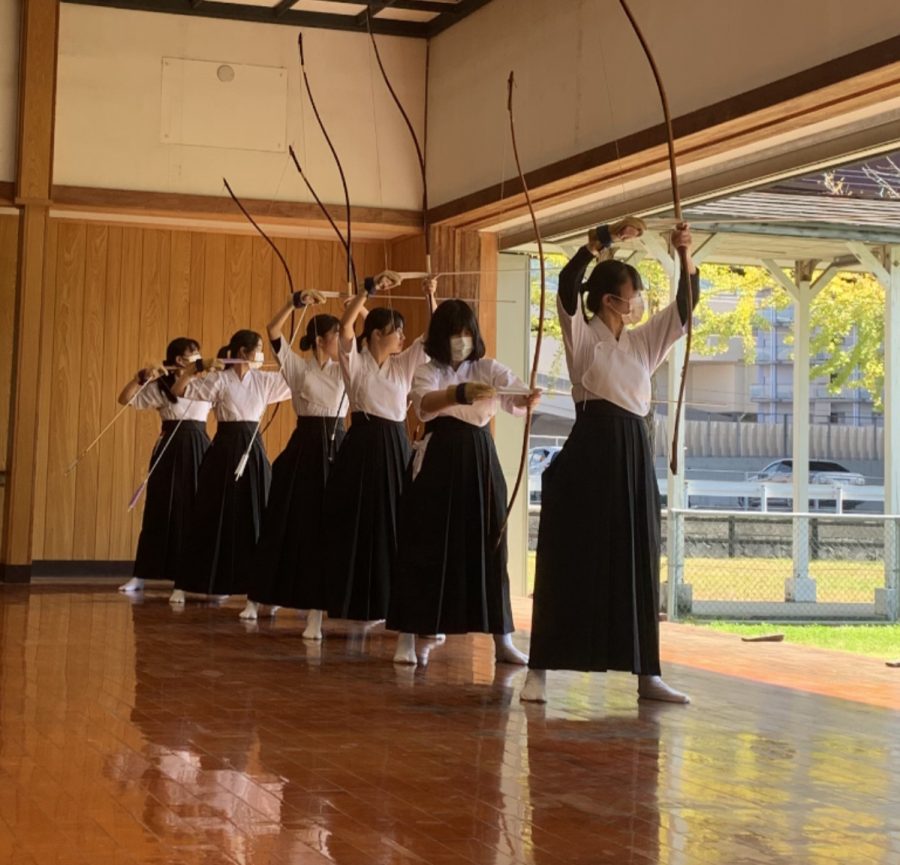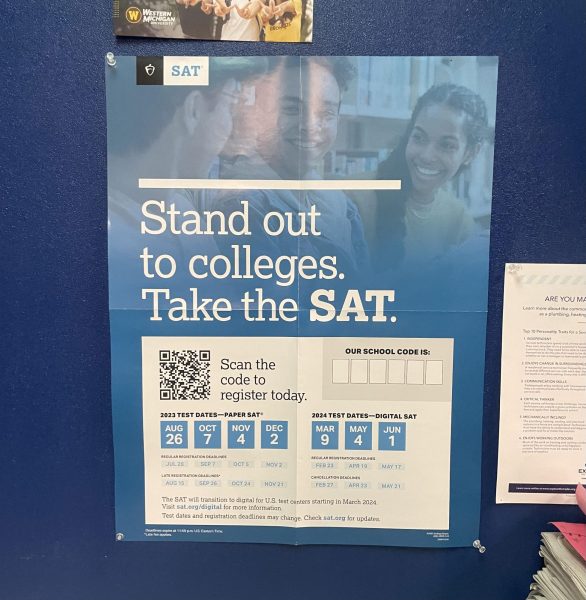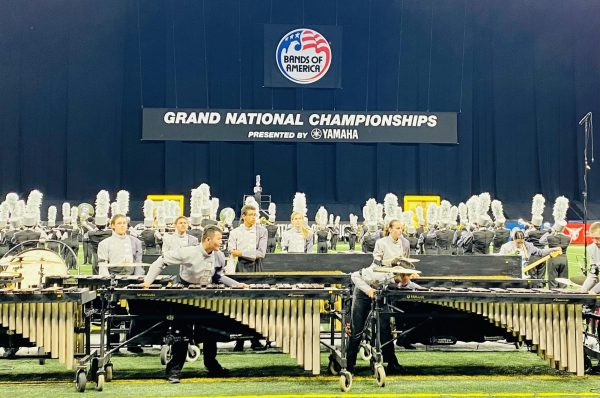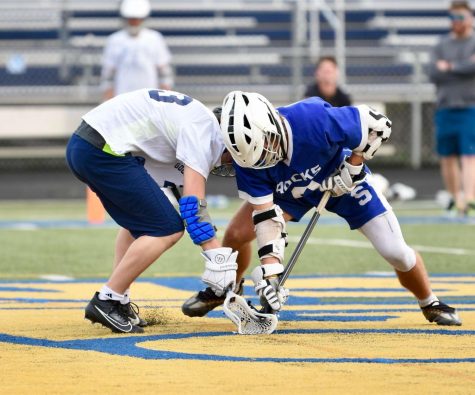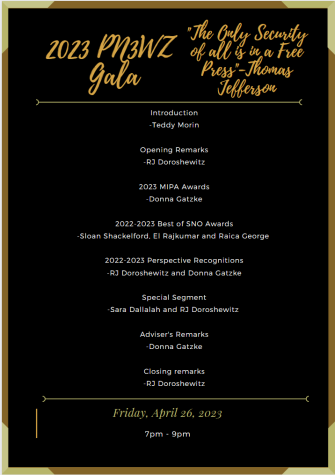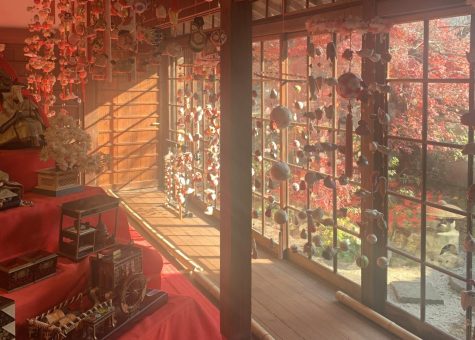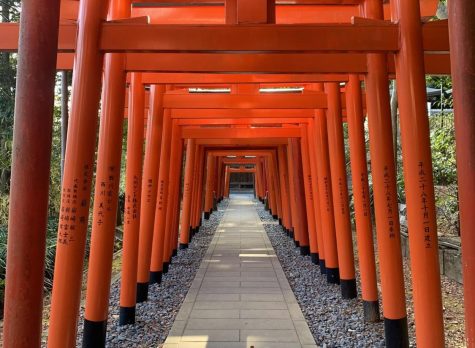Journals from Japan: the art of Kyūdō
Kwassui High School students of various grade levels raise their bows, which are also known as yumi. October 3, 2022.
“Kiritsu,” calls out the sensei. We take a step forward with our bows and arrows ready in either hand. “Hajime.” We look towards the ground, bend at the waists and bow. Making sure our nearly seven-foot wooden bows don’t hit the ground, the five other players and I take a deep breath to calm our nerves as we take three more steps to approach the shooting position. On the last step, we swivel on our heels 90 degrees to the right and stand with our best posture—shoulders straight, chest open and legs open wide.
I lift my bow slightly and place the first arrow in the middle of the string. I grasp the pointed end of my second arrow between my palm, ring and pinky fingers. The bulky glove on my right hand, called a kake, slides up the string to meet my arrow. The arrow rests against my fingers, and I am careful to avoid ruffling the feathers on the end of the arrow. Maintaining my posture, I turn my head 90 degrees to the left and find my intended target in the distance. I slowly raise my arms until my elbows are just above eye level. Without moving my right arm, I fully extend my left arm as I rotate my left hand to point at the target. My right arm draws the bow as my elbow goes as far back as it can. The tip of the arrow lowers slightly as I draw the string of the bow until the back of the arrow hits my mouth line. My arms shake slightly as I strain to keep this position while adjusting the bow to be in line to hit the target and try to gain as much power as possible.
Hold it. Steady. And… release.
The arrow slices through the air toward the targets. The satisfying sound of the arrow piercing through the paper target rings through my ears and I exhale in relief, not realizing that I was holding my breath in the first place.
All of these choreographed steps are just one of the many techniques used to play kyūdō, or Japanese archery.
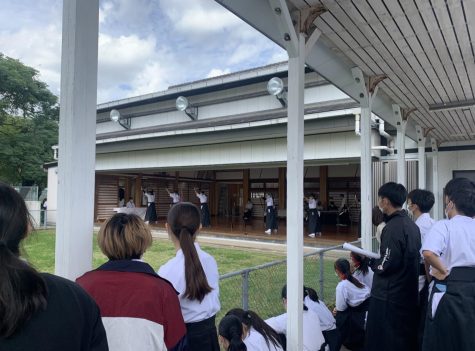
——————————————————————————-
Dating back as far as the stone age, archery and the use of bows have been a resource for many people around the world.
Bows were seen as symbols of dignity in many countries, which made their role in the shinto and samurai periods of Japanese history even more prominent.
Chinese influence also encouraged the use of bows and helped shape the virtues of the Japanese Samurai, whose personal goals often consisted of mastering horseback archery and training their body and mind.
As advances were made in weaponry technology, weapons such as guns were introduced in Japan. Archery became an art of the body and mind, rather than a combat tool.
Throughout the past two centuries, kyūdō was adopted as a common extracurricular activity in many Japanese schools. When World War II broke out, kyūdō was taken away as an extracurricular option for students, because they wanted students to direct their focus toward the war.
+By the 1950s, kyūdō was once again allowed to be practiced in schools.
In modern day kyūdō games, players focus more on spiritual and physical gains than combat. The art of modern kyūdō is now a part of many schools’ physical education programs, and kyūdō competitions are held around the world.
Unlike many other countries, school sports and extracurricular activities are not seasonal in Japan, instead continuing all year long.
The kyūdō club has quite a few rules regarding etiquette and technique, but is overall a fairly laid-back club with many amazing people. The sport has historically been even stricter, with some of the remaining rules including the use of different choreographed steps for different events.
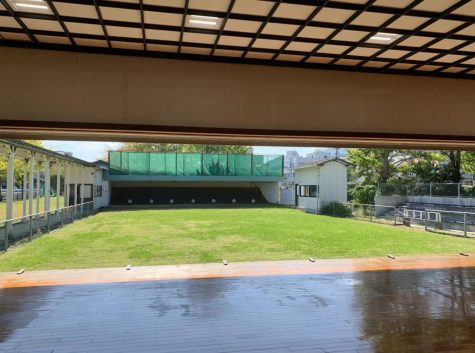
For archery games students have to use the standing style, and archery skills tests require students to use the sitting style.
When students enter and leave the dojo, they have to greet the teachers. They must bow three times, clap twice, and bow three times again. After bowing, they must say “Konnichiwa. Onegaishimasu,” or “Arigatogozaimasu. Osakinishitsureishimasu,” depending on if they are entering or leaving the dojo. These phrases loosely translate to “Hello. Please teach us,” which is used upon entering, and “Thank you. We must leave now,” respectively.
The skill of the students in the kyūdō club is unquestionable. Not only is their skill level admirable, their eagerness to welcome me and other new students is heartwarming.
Sports and other club activities have a way of bringing people together regardless of differences of language, culture, or background. Many exchange students find some of their first friends in after-school clubs or sports teams associated with their school. Considering the friendships I have created thus far, I can definitely say that this is true.
Grace Ridpath is a junior from Salem High School, and currently a foreign exchange student in Japan.
Your donation will support the student journalists of Salem High School - MI. Your contribution will allow us to purchase equipment and cover our annual website hosting costs.
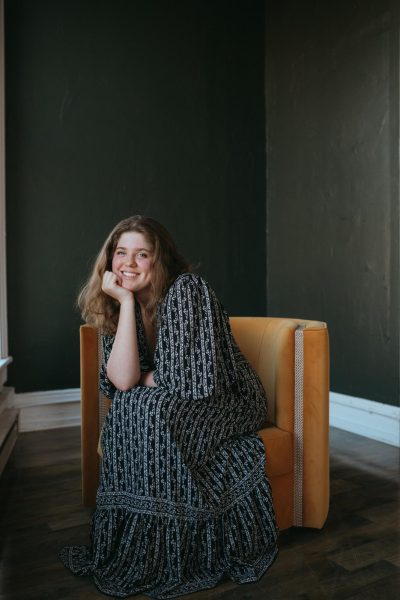
Grace Ridpath is a senior at Salem High School who enjoys English and math. During her junior year, she studied abroad in Nagasaki, Japan as a Rotary Youth...


